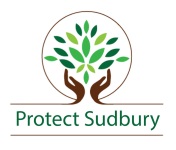Research News, June 23, 2016
Since our last newsletter, the Research Team has concluded its study of the greenhouse gas impact of the massive deforestation that would be required under the Eversource proposed Sudbury to Hudson Reliability Project. Bob Israel and Jennifer Dudgeon of the Research Team have spearheaded a project to estimate the number of trees that would be lost and the associated greenhouse gas impact as a result of clearcutting along the proposed transmission corridor. They have calculated that approximately 60 acres of forested land would be lost due to the clearcutting of an 82-foot wide transmission corridor, resulting in the removal of roughly 27,000 trees, and eliminating 2,314 tons of carbon storage that would instead be released into the atmosphere. The loss of the carbon storage would result in the equivalent release of greenhouse gases emitted by 1,620 passenger vehicles for a year, driven approximately 18,326,571 miles per year.
The calculations in this study pertain only to the clearcutting along the 7.4 mile rail bed that Eversource has proposed for the Sudbury to Hudson Reliability Project. We based our study on four different Right of Way (ROW) width scenarios (as identified below). According to our research on forestation along the ROW path, we have found that of the 7.4 mile rail ROW, 5.65 miles traverse forested land, 0.85 miles have forested land on only one side of the rail bed, and the remaining 0.9 miles are not forested and would not require clear cutting. We have used the USDA Forest Inventory Data Online (FIDO) tool (http://apps.fs.fed.us/fia/fido/index.html) for all of these calculations, specific to Middlesex County.
Eversource ROW width Scenarios:
- 82 foot, above ground corridor (Eversource preferred route)[1]
- 25 foot, underground corridor
- 32 foot, underground corridor (most likely width of underground corridor)[2]
- 45 foot, underground corridor
The table below details the total acres of forested land that would be removed for each of the four corridor width scenarios as well as the current above ground carbon storage that would be lost in the respective corridors and the total number of trees that would be lost.
| Corridor Width (feet) Scenarios | ||||
| 82 | 25 | 32 | 45 | |
| Total acre of forest requiring clear cut | 60 | 18 | 24 | 33 |
| Aboveground carbon storage (ton) on forest land | 2,314 | 706 | 903 | 1,270 |
| Total number of trees removed | 26,795 | 8,169 | 10,457 | 14,704 |
To put the carbon loss into perspective, we have provided a Table of Equivalences (as identified by the US EPA) to help our readers fully grasp the impact of clearcutting under the four corridor width scenarios.
| Carbon Equivalents | Corridor Width (feet) Scenarios | ||||
| 82 | 25 | 32 | 45 | ||
| GHG emissions from | Passenger vehicles driven for one year | 1,620 | 494 | 632 | |
| Miles driven by average passenger vehicle | 18,326,571 | 5,591,426 | 7,151,639 | 10,058,230 | |
[1] Transcribed notes to Sudbury Board of Selectmen meeting with Eversource, Tuesday April 5, 2016, where notes state: “Right‐of‐Way Clearing Overhead: 82 ft. of overhead would need to be cleared. Eversource would ask abutters to cut some trees, but not require that they do this, with the exception of “danger trees” which could fall on a line and knock it out. Underground: About 30 feet would be needed on the ground. The number is approximate due to the need to put in manholes, varying topography and other factors. Half of the clearing would be what is needed for the access road.”
[2] Ibid.
